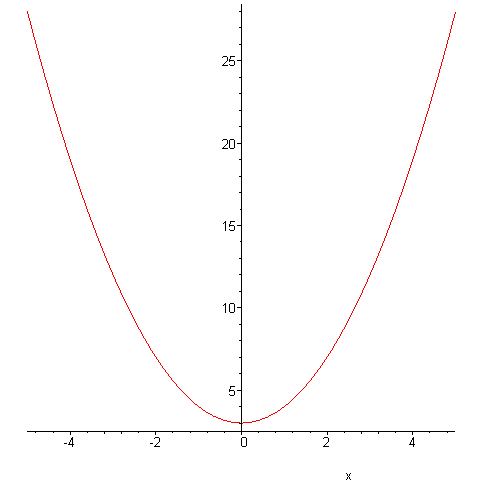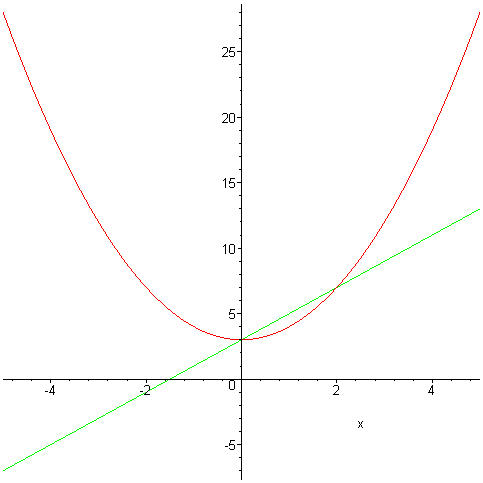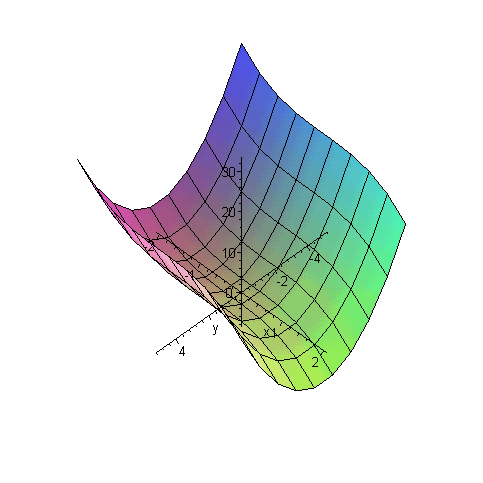
A simple “How To” for MaplePhilippe Camacho |
This article is a list of small useful tricks for Maple, like “How to plot a two variable function?”, “How to evaluate an expression numerically?” and so on... Every item is self-contained and only simple examples are provided with a brief comment so you can save your time! The examples were tested under Maple 10.
> eval(2^(1/2)); 1.414213562
|
First set the function, or the expression that define the function:
> f:= x^2 + log(x);
|
> plot(f,x=-1..10);
|

> f1:= x^2 + 3; > f2:= 2*x+3; > plot(f1,f2,x=-10..10);
|

First define the function, for example:
> f:= x^2 - y^3;
|
plot3d(f,x=-5..5,y=-2..2,grid=[10,10],axes=normal);
|

> solve(x^2-4=0,x); 2, -2
|
> solve({x-4* y =0,y + x + 3=0},{x,y});
{x = -12/5, y = -3/5}
|
Define the function:
> f:= x^2+3+y;
|
> diff(f,x); 2*x > diff(f,y); 1
|
> diff(x^4, x$2); 12*x^2
|
For obtaining the primitive of f(x)=x2:
> int(x^2,x); 1/3*x^3
|
> int(x^2,x=1..3); 26/3
|
> subs({x=10,t=1,a=3},x+a+t+w);
14 + w
|
This document was translated from LATEX by HEVEA.